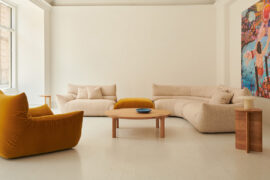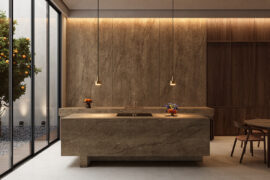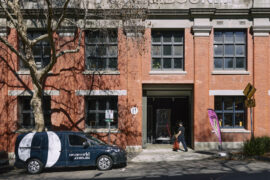At a time when collaboration is often leveraged as a vehicle for brand amplification rather than a genuine exchange of ideas, Bankston and Sans-Arc Studio offer a compelling rejoinder.

April 16th, 2025
In a landscape where quantity often challenges quality, partnerships with genuine purpose and cultural resonance will be the ones that continue to stand out. Furthermore, it appears the rise of cross-industry partnerships has reshaped the way consumers interact with design brands. Take the collaboration between Australian hardware brand Bankston and architecture studio Sans-Arc Studio, for example, manifesting as a tangible representation of a shared design ethos. The latest evolution of the multi-award-winning Super Collection is one such release, where the additions “give the designers confidence and clients too,” describes Matiya Marovich, Director of Sans-Arc Studio.
Bankston has long positioned itself as a design-led brand, collaborating with a cadre of lauded architects and designers to conceive artefacts that transcend the expected – the latest collaboration in their oeuvre with Sans-Arc Studio reinforces this approach. Sans-Arc Studio, under the deft direction of Matiya Marovich, has consistently demonstrated an aptitude for manipulating space with playfulness and precision. Thus, it should come as no surprise Marovich has imbued the collection with the same sense of scale and ingenuity to inform the new iterations.

The respective parties met when they resided in Adelaide before Matiya forayed to Melbourne for an eight-year tenure, later returning home after he had children. This partnership, a by-product of a collaboration between friends, expands upon the Super Collection established years ago. “We work with people whose work we love,” says Emily Bradley, Co-Founder of Bankston. Alluding to the collection’s resonance with its audience – oscillating between creative synergy and calculated brand stratagems – Steve Bradley notes that its traction means “more eyes on our initiatives … we are being scrutinised in a positive way.”
The original precepts evolve through the introduction of four new arrivals that offer six different lacquers. “While the objects themselves are not the same, they have the same language,” says Marovich. The products remain “coherent but unique.”

Inspired by a legion of precedents from the “Radical Design Movement to Post-Modernism,” the collection’s proclivity was to “break the mould,” shares Marovich, playing into the concept of “art vs craft.” Exaggerated shapes and unforeseen proportions challenge orthodox approaches to hardware, changing handles and pulls into narrative-driven design elements rather than mere utilitarian fixtures. “Stepping away from what hardware should be,” Steve Bradley adds, “which can commonly be perceived as universally boring.”
The Futurismo DDA Lever continues this narrative while integrating accessibility considerations in alignment with the Australian Disability Discrimination Act 1992, ensuring usability in commercial, hospitality and public domains. Alongside this, the Futurismo Pull extends the purview into a broader array of projects, offering increased versatility in application. Meanwhile, the Zzzigurat Cupboard Knob and Cabinet Pull introduce stepped geometries that establish a visual cadence across joinery and architectural hardware.
Bankston
bankston.com
Sans-Arc Studio
sansarc.studio

Next up: Products already catching eyes at Milan Design Week 2025
INDESIGN is on instagram
Follow @indesignlive
A searchable and comprehensive guide for specifying leading products and their suppliers
Keep up to date with the latest and greatest from our industry BFF's!

London-based design duo Raw Edges have joined forces with Established & Sons and Tongue & Groove to introduce Wall to Wall – a hand-stained, “living collection” that transforms parquet flooring into a canvas of colour, pattern, and possibility.

A curated exhibition in Frederiksstaden captures the spirit of Australian design

Across four decades, Leone Lorrimer LFRAIA GAICD reshaped Australian architecture through strategic vision, global influence and fearless leadership.

‘Come Together’ takes a global view of multigenerational design, an increasingly popular phenomenon with some especially notable examples in Australia.
The internet never sleeps! Here's the stuff you might have missed

Cosentino introduces Éclos®, a new mineral surface brand featuring zero crystalline silica, high recycled content and Inlayr® technology that brings 3D layered realism to design.

ownworld unveiled Silent Beams in its Collingwood showroom, marking the arrival of Swedish lighting brand Wästberg through a new partnership with Euroluce.